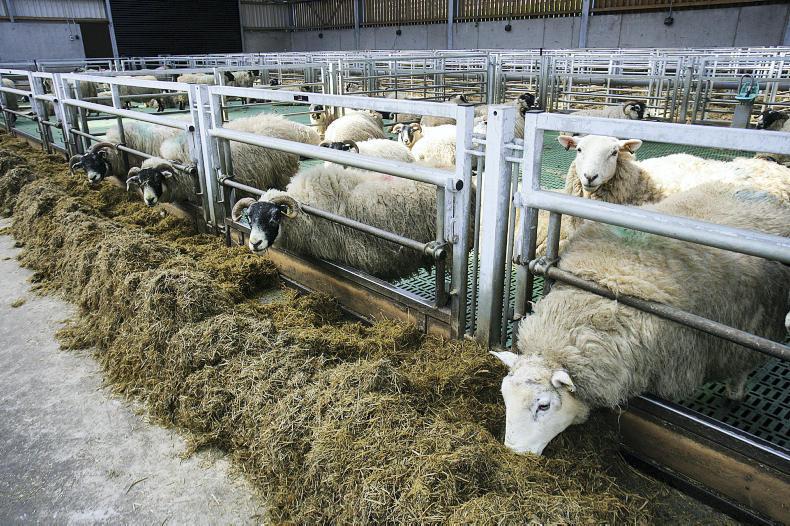Housing ewes
Some highly stocked farms will be making plans for housing ewes between now and Christmas. Housing ewes dry, if at all possible, will deliver benefits in allowing ewes to become accustomed to their new environment quicker. Any ewes lacking significant condition should be grouped together for preferential treatment, with more precise grouping based on predicted lambing date, litter size and a review of condition score carried out at scanning. It is worth checking that any alterations to housing required are completed in advance. Tasks like checking ballcocks in drinking troughs are working correctly and moving freely will help to avoid issues such as ballcocks sticking and water troughs overflowing.
Teagasc research shows that winter shearing has the potential to increase lamb birth weight in mid-season lambing ewes by 0.6kg without increasing lambing difficulty. Increase weaning weight by 1.9kg and subsequently reduce the age of lambs to slaughter by about two weeks. The big benefit for some is that this will allow about 15% more ewes to be housed in a given space, provided sufficient feed space is available. Take note that ewes should only be shorn where there is the potential for at least eight weeks wool regrowth, while recommendations also point to ewes being released outdoors from March onwards.
Outwintering ewes
A percentage of flocks dealing with tighter straw supplies are hoping to retain ewes outdoors for longer to conserve supplies. It is important that this is carried out without compromising on grass supplies next spring. Once grass reserves designated for autumn grazing are depleted, ewes should be confined to a given area. Grass growth has been good in recent weeks on closed paddocks but the temptation must be resisted to re-graze closed swards. While it may provide a reprieve now, it will significantly increase costs next spring. Mid-season lambing flocks with a high stocking rate of 10 ewes/ha to 12 ewes/ha should be on target to have 80% of the farm closed by early- to -mid-December.
Early lambing ewes
The number of early lambing commercial ewes continues to fall in favour of later lambing. Flocks lambing in the coming weeks will now be entering a critical period with nutritional demand rising sharply. Table 1 details concentrate supplementation advice based on silage of varying quality. Feeding rates can generally be reduced or increased by 30% for single and triplet-bearing ewes. It is important to note rapid demand for protein in the final weeks of pregnancy, with 18% typically required for medium-prolificacy flocks, rising to 19% to 21% for high-prolificacy flocks.






 This is a subscriber-only article
This is a subscriber-only article









SHARING OPTIONS: